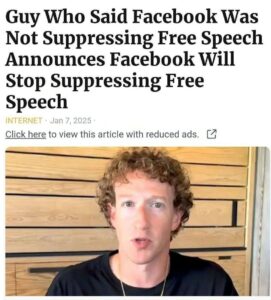How AI is Revolutionizing Industries and Disrupting Traditional Business Models
How AI is Revolutionizing Industries and Disrupting Traditional Business Modes from a Libertarian Perspective
In an era characterized by rapid technological evolution, the ascent of artificial intelligence (AI) is reshaping the landscapes of various industries, embracing a new frontier of possibilities while simultaneously unsettling traditional business models. The integration of AI technologies offers a compelling glance at how innovation spearheaded within a free-market framework can foster unprecedented levels of efficiency and personalization. However, embracing these advancements demands a pragmatic evaluation from a libertarian viewpoint, focusing particularly on how AI can promote a true meritocracy in business ecosystems amid its disruptive course.
Redefining Efficiency and Productivity
At the heart of the libertarian ethos is the principle of minimal government intervention, fostering an environment where individuals and businesses can operate driven by the mechanisms of the free market. AI stands as a paragon of this philosophy, driving efficiency without the need for overarching regulatory frameworks. In sectors like manufacturing, AI-driven robotics have revolutionized production lines, enhancing precision and reducing wastage, thus aligning with libertarian ideals of resource efficiency and economic rationality.
Moreover, AI’s ability to process and analyze vast datasets transcends human capabilities, enabling more informed decision-making in real time. In financial services, AI algorithms now perform market analyses and manage investments, democratizing access to information that was once the purview of a select few, thereby supporting a meritocratic restructuring of access to financial growth opportunities.
Automation and Employment: A Meritocratic Perspective
Critics often argue that AI and automation could lead to significant job losses, portraying a dystopian future where human workers are marginalized. Libertarians and free-market advocates, however, view this as an evolutionary step towards higher-value roles within the economy. By automating routine tasks, AI frees individuals to focus on creative and strategic pursuits, fostering a job market that rewards innovation, personal responsibility, and merit.
The challenge, skeptically viewed, lies in transitioning the workforce to this new paradigm. It indeed introduces temporary dislocations, but the potential for human capital development is immense if the market’s dynamics are allowed to operate without restrictive interventions. Educational and vocational training systems, if driven by market needs and technological advancements, can better prepare individuals for the demands of an AI-enhanced job market.
Impact on Consumer Markets and Personalized Services
In consumer markets, AI’s role as a disruptor is visibly beneficial, aligning well with libertarian values by enhancing individual choice and market competition. Take, for instance, the rise of AI in retail through personalized shopping experiences, product recommendations, and inventory management, which significantly improve consumer satisfaction and business efficiency. These advancements allow smaller businesses to compete on a larger scale, previously dominated by corporations with extensive resources, highlighting a shift towards a more competitive and meritocratic market structure.
Moreover, AI-driven platforms in sectors like healthcare tailor services to individual needs, potentially reducing costs and improving health outcomes. This level of personalization embodies the free-market principle of responding directly to consumer demands without one-size-fits-all solutions often characteristic of heavily regulated sectors.
Ethical Considerations and Regulatory Challenges
From a libertarian standpoint, the key to harnessing AI effectively lies in constructing a regulatory environment that encourages innovation while safeguarding individual freedoms. Libertarians would argue for a form of regulation that prevents abuse (like breaches of privacy) without stifling creativity and growth. The balance is critical; excessive regulation could cripple AI’s potential to drive economic growth and improve living standards.
Thus, the call is not for absence of regulation but for smart regulation, which ensures transparency and accountability without dampening the entrepreneurial spirit. This approach aligns with a broader libertarian advocacy for a government that facilitates rather than dictates.
Conclusion
As AI continues to redefine market structures, the principles of the free market can provide a framework for its healthy integration into the economy. Its ability to democratize information, enhance personal and business efficiency, and foster meritocratic advancement underscores AI’s potential as a force for good within a libertarian schema. However, vigilance is necessary to ensure that its deployment champions individual rights and promotes genuine competition without falling prey to monopolistic abuses or egregious governmental overreach.
FAQs
-
- What are the main industries impacted by AI?
-
- AI impacts numerous sectors including manufacturing, healthcare, financial services, retail, logistics, and more.
-
- What are the main industries impacted by AI?
-
- How does AI promote a meritocratic job market?
-
- By automating routine tasks, AI encourages a shift towards jobs that require more creativity and problem-solving, potentially increasing job satisfaction and rewarding skill and innovation.
-
- How does AI promote a meritocratic job market?
-
- What is the libertarian view on AI and employment?
-
- Libertarians typically see AI as a tool to eliminate inefficiency, arguing that it leads to more meaningful employment opportunities and advocating for minimal interference in the adjustment process.
-
- What is the libertarian view on AI and employment?
-
- How should regulations adapt to AI advancements?
-
- Regulations should ensure transparency and fairness, protect individual privacy, and prevent monopolistic practices without stifling innovation.
-
- How should regulations adapt to AI advancements?
References
-
- Libertarianism and the Free Market: Libertarian thinkers like Milton Friedman and Friedrich Hayek have extensively discussed the virtues of free-market mechanisms in promoting innovation and economic efficiency.
-
- AI and Job Market Evolution: Studies from MIT and Stanford discuss transitions in job markets due to technological advancements like AI.
-
- Regulatory Frameworks for AI: White papers from technology think tanks often explore the balance needed in regulations to maximize AI’s benefits while minimizing potential harms.
Advertisement:


